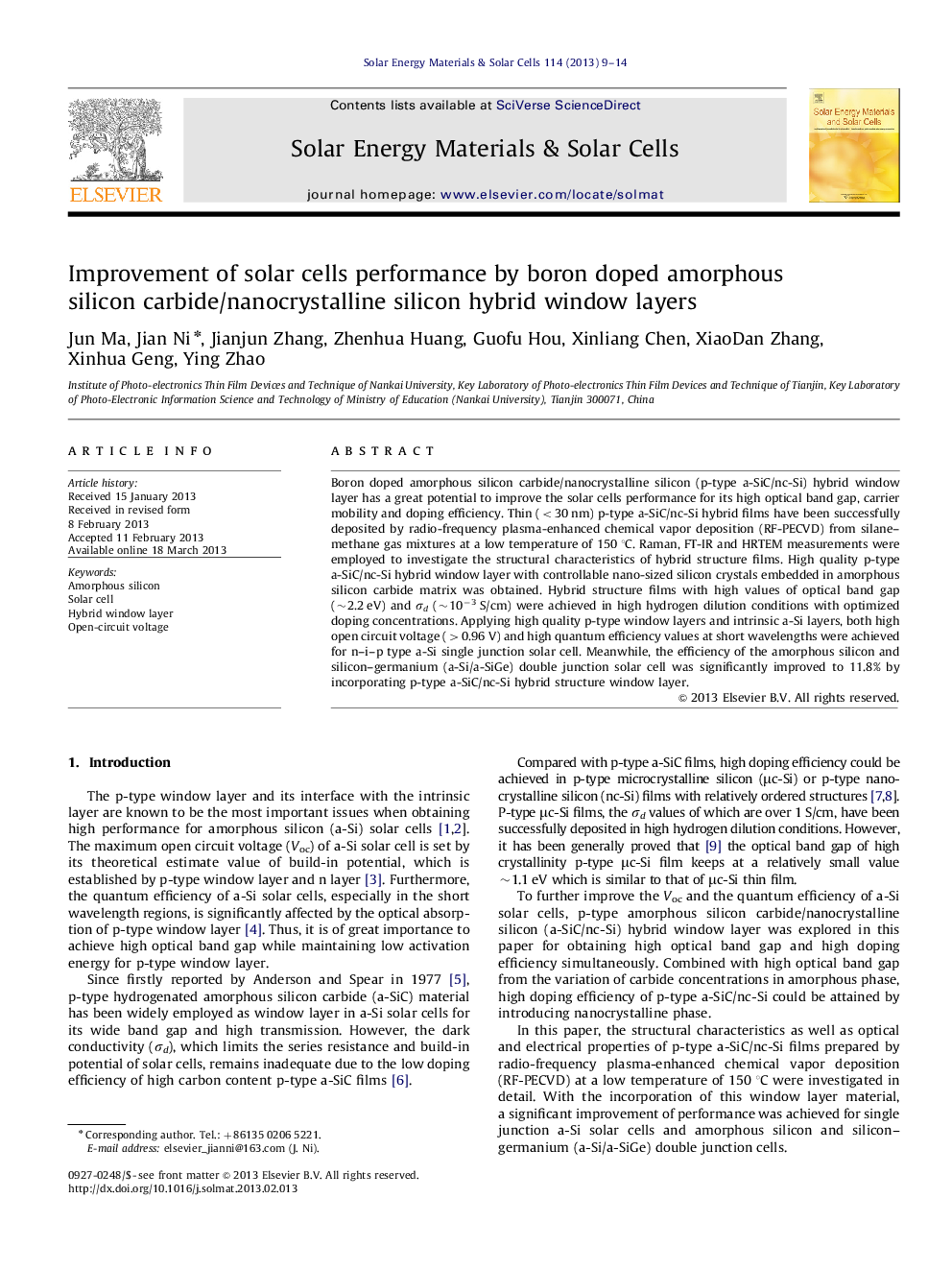| Article ID | Journal | Published Year | Pages | File Type |
|---|---|---|---|---|
| 78484 | Solar Energy Materials and Solar Cells | 2013 | 6 Pages |
Boron doped amorphous silicon carbide/nanocrystalline silicon (p-type a-SiC/nc-Si) hybrid window layer has a great potential to improve the solar cells performance for its high optical band gap, carrier mobility and doping efficiency. Thin (<30 nm) p-type a-SiC/nc-Si hybrid films have been successfully deposited by radio-frequency plasma-enhanced chemical vapor deposition (RF-PECVD) from silane–methane gas mixtures at a low temperature of 150 °C. Raman, FT-IR and HRTEM measurements were employed to investigate the structural characteristics of hybrid structure films. High quality p-type a-SiC/nc-Si hybrid window layer with controllable nano-sized silicon crystals embedded in amorphous silicon carbide matrix was obtained. Hybrid structure films with high values of optical band gap (∼2.2 eV) and σd (∼10−3 S/cm) were achieved in high hydrogen dilution conditions with optimized doping concentrations. Applying high quality p-type window layers and intrinsic a-Si layers, both high open circuit voltage (>0.96 V) and high quantum efficiency values at short wavelengths were achieved for n–i–p type a-Si single junction solar cell. Meanwhile, the efficiency of the amorphous silicon and silicon–germanium (a-Si/a-SiGe) double junction solar cell was significantly improved to 11.8% by incorporating p-type a-SiC/nc-Si hybrid structure window layer.
► High quality p-type a-SiC/nc-Si hybrid window layer (E04 ∼2.2 eV and σd ∼10−3 S/cm) was obtained. ► N–i–p type a-Si solar cell with Voc=0.97 V was deposited at a low substrate temperature of 150 °C. ► Double junction solar cell on stainless steel substrate with efficiency of 11.8% was obtained.
